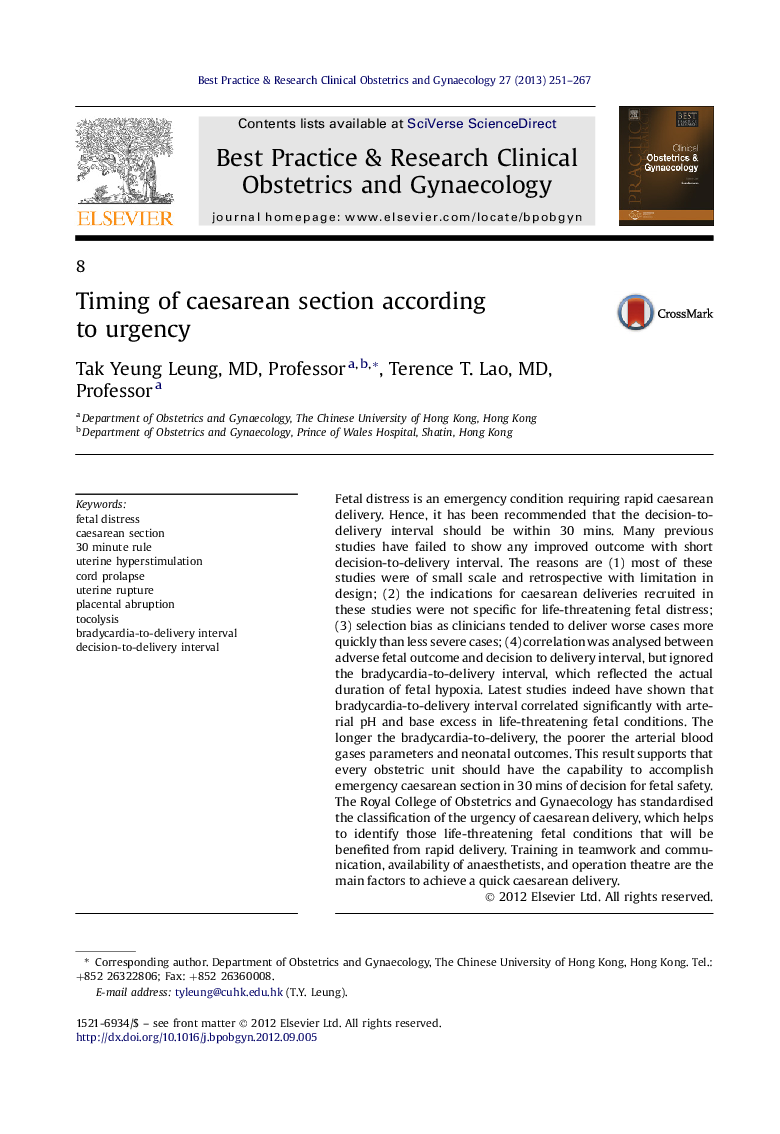| کد مقاله | کد نشریه | سال انتشار | مقاله انگلیسی | نسخه تمام متن |
|---|---|---|---|---|
| 3907360 | 1251043 | 2013 | 17 صفحه PDF | دانلود رایگان |

Fetal distress is an emergency condition requiring rapid caesarean delivery. Hence, it has been recommended that the decision-to-delivery interval should be within 30 mins. Many previous studies have failed to show any improved outcome with short decision-to-delivery interval. The reasons are (1) most of these studies were of small scale and retrospective with limitation in design; (2) the indications for caesarean deliveries recruited in these studies were not specific for life-threatening fetal distress; (3) selection bias as clinicians tended to deliver worse cases more quickly than less severe cases; (4) correlation was analysed between adverse fetal outcome and decision to delivery interval, but ignored the bradycardia-to-delivery interval, which reflected the actual duration of fetal hypoxia. Latest studies indeed have shown that bradycardia-to-delivery interval correlated significantly with arterial pH and base excess in life-threatening fetal conditions. The longer the bradycardia-to-delivery, the poorer the arterial blood gases parameters and neonatal outcomes. This result supports that every obstetric unit should have the capability to accomplish emergency caesarean section in 30 mins of decision for fetal safety. The Royal College of Obstetrics and Gynaecology has standardised the classification of the urgency of caesarean delivery, which helps to identify those life-threatening fetal conditions that will be benefited from rapid delivery. Training in teamwork and communication, availability of anaesthetists, and operation theatre are the main factors to achieve a quick caesarean delivery.
Journal: Best Practice & Research Clinical Obstetrics & Gynaecology - Volume 27, Issue 2, April 2013, Pages 251–267